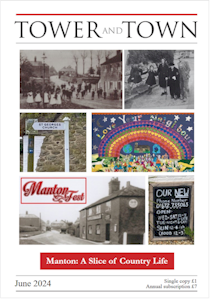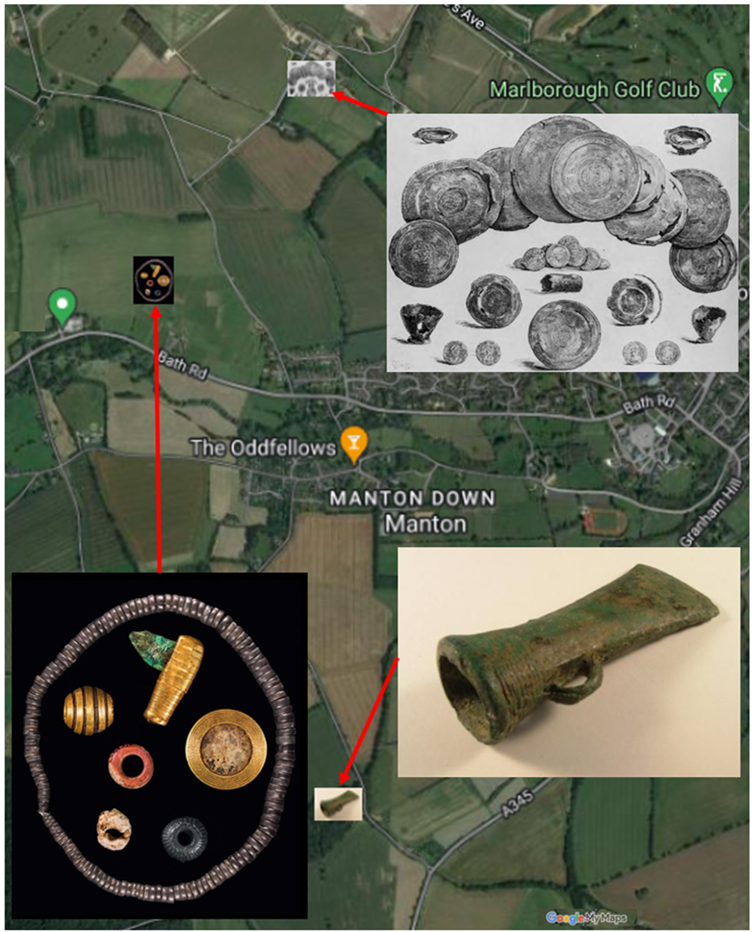

Tower and Town, June 2024 (view the full edition) (view the full edition)Hoards And Burials; The Archaeology Of MantonManton has more than its fair share of exciting archaeological discoveries, revealing a long and important past. The story begins with the excavation of a rich Early Bronze Age woman's burial in a mound close to the A4 at Preshute. In around 1,800BC the Marlborough Lady was buried with objects made of gold and amber including an ear-ring, a miniature axe and a miniature dagger. This is one of the richest Bronze Age burials in Britain, including objects similar to those from burials close to Stonehenge. The gold may have come from Cornwall, but the amber came from far away across the North Sea, in Denmark or the Baltic. Her barrow is in sight of the Marlborough Mound, which we now know is Prehistoric, and it is possible that there is a Neolithic henge below modern Marlborough. In around 1,200BC, during the Late Bronze Age, a hoard of 10 bronze axe heads was buried near Manton Copse, in the south of the parish. Close to the top of the hill, the axes may have been buried as an offering to the local spirits, perhaps at a sacred grove, until they were found in 1914. In 1999 another 10 axes were found, which may have been part of the same hoard, while metal detecting by David and John Philpotts, along with Paul Hart. They promptly reported their find, which meant that it could be excavated by archaeologists. In the Roman period, four different hoards were carefully deposited near Manton House, on the northern edge of the Parish. The most impressive was a hoard of 12 pewter dishes and four bowls. One plate, decorated with an engraved interlace design at the centre, is inscribed with the name of its female owner - 'Justinae'. Close by was found a hoard of 12 Roman silver coins. These date to the very end of the Roman period, and the edges of the coins have been 'clipped', meaning that some silver could be melted down and re-used, perhaps to strike more coins. New research suggests that these coins may have carried on being used long after the official Roman withdrawal in AD 410, in the shadowy 'British' period before the arrival of the first Anglo-Saxons.
 Map courtesy of Dr David Dawson Dr David Dawson |